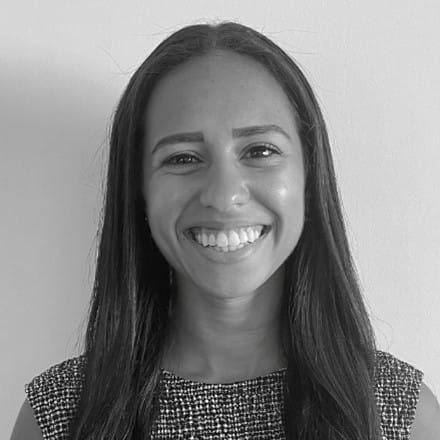The New Mandate: How Diversity in Clinical Trials is Evolving from Ideal to Imperative
Article
Clinical


Lack of diversity in trials not only poses ethical risks but can also result in ineffective — or even dangerous — outcomes for groups not adequately represented in research.
There are roughly 8.2 billion people on the planet — each with a unique genetic makeup and lived experience. Imagine how much stronger science could be if clinical trials embraced that full spectrum.
In recent years, the call for greater diversity in clinical trials has grown louder. Once treated as a “nice to have,” inclusivity in medical research is now viewed as a “must have” for scientific validity, ethical responsibility, and public health.
Fenwick Eckhardt, Associate Director for Solutions Consulting Operations at Citeline, underscored that transformation during a panel discussion, “Clinical Trial Diversity and Intersectionality,” at the Association of Clinical Research Professionals (ACRP) 2025 conference.
“We’ve reached a point where it’s not just about representation in research — it’s no longer a disputable point,” Eckhardt says. “We know that drugs affect different individuals differently, and that makes inclusive trial design not just important, but critical.”
This shift, she says, reflects broader regulatory and cultural forces. In 2022, the US Food and Drug Administration (FDA) released guidance recommending that sponsors submit Diversity Action Plans (DAPs) to outline how they intend to enroll participants from underrepresented populations. While the FDA’s DAP guidance has faced resistance — including removal from the agency’s website — Eckhardt reinforces the importance of staying focused on patients.
“Even though the language and policy environment are shifting, that doesn’t mean our intentions need to change,” she said.
And the stakes are high. Lack of diversity in trials not only poses ethical risks but can also result in ineffective — or even dangerous — outcomes for groups not adequately represented in research. Historically, most clinical trials were conducted primarily on white male participants, leading to gaps in how treatments perform across different demographics. For example, a study cited in JAMA Oncology found that fewer than 5% of participants in US cancer clinical trials were Black, despite Black Americans making up about 13% of the population.
By contrast, some companies are leading the way, particularly those in big pharma, according to Eckhardt. Pfizer, for instance, has reported over 13% Black participation in its trials, which closely aligns with census data.
Still, operationalizing diversity is not easy. Eckhardt describes how DAPs require companies to articulate not only their goals but also their strategies. One major area of focus is inclusive site selection — placing trial sites in communities with historically underserved populations. Another is flexible protocol design, which helps reduce patient burden by accounting for logistical barriers like transportation or physical mobility.
“Something as simple as embedding flexibility so someone with muscular dystrophy doesn’t need to physically get to a site every week — that can make a huge difference,” she says. “We’re going line by line through protocols to ensure criteria like body mass index (BMI) levels or comorbidities aren’t unnecessarily excluding certain racial or ethnic groups.”
Data play a foundational role in these efforts. Real-world data and social determinants of health — like transportation access and education levels — are increasingly used to identify gaps and prioritize resources.
“It’s not just race and ethnicity,” she says. “We’re looking at broader issues like non-English speakers, older adults, LGBTQIA+ individuals, and those with disabilities. The scope of what inclusivity means is expanding.”
And companies are getting creative — including offering ride-share partnerships for pharmacy pickups, multilingual educational content co-created with community leaders, and mobile health units dispatched directly to underserved areas.
“These are real methods that pharma is using right now,” she says. “Literally just getting someone to the site can be a game changer.”
With growing political pushback against diversity, equity, and inclusion (DEI) initiatives, many in the industry worry about losing ground. But Eckhardt maintains that the mission must remain clear: “We have to stay patient-centered.”
To help the conversation evolve with the climate, some experts have proposed renaming DAPs as “Inclusive Research Action Plans.” The change in terminology could help preserve intent while navigating a more politically fraught landscape.
“It’s about reframing without diluting the message,” Eckhardt says.
The benefits of diversity are well-documented. A 2022 report from the National Academies of Sciences, Engineering, and Medicine emphasized that diverse trial populations lead to more generalizable results, improved safety data, and better public trust.
The bottom line? Increased diversity doesn’t just lead to better science — it’s also good for business.
“You’re leaving opportunities on the table if you don’t do this,” Eckhardt says. “You’re limiting yourself to populations that have already been treated and tried. And you’re creating more mistrust with underrepresented groups. When we finally have more mandated policies, that mistrust is only going to increase if we don’t act now.”
As for the future, Eckhardt remains cautiously optimistic.
“We’ve made incredible progress. The industry gets it now — it’s no longer about educating people on why diversity matters. It’s about allocating resources and implementing it as a built-in objective. But true, systemic change? That’ll take another 10 years, at least.”
Still, she’s encouraged by what she sees as the beginning of an industry-wide shift — a transformation she compares to the adoption of smartphones.
“We were all reluctant to accept this handheld computer until we weren’t. And now? Even people in their 70s are lining up for the latest iPhone,” she says. “Change is scary, but it’s possible. And it’s happening.”

Managing Editor,
Custom Content
Norstella

Associate Director,
Solutions Consulting Operations
Citeline
Norstella is Citeline’s parent company.

Meredith Landry
Managing Editor, Custom Content, Norstella
She is a seasoned writer, editor, content strategist, and moderator. With a career spanning digital media, print publications, and live events, she has built a reputation for elevating content strategies and fostering meaningful discussions. Meredith has led editorial teams, developed content strategies, and produced high-quality publications for major organizations in industries including healthcare, geospatial intelligence, real estate, and more. She has managed newsroom operations, produced live, and recorded podcasts and served as a conference moderator. Meredith has a journalism degree from Loyola University New Orleans and currently lives in Los Angeles.


